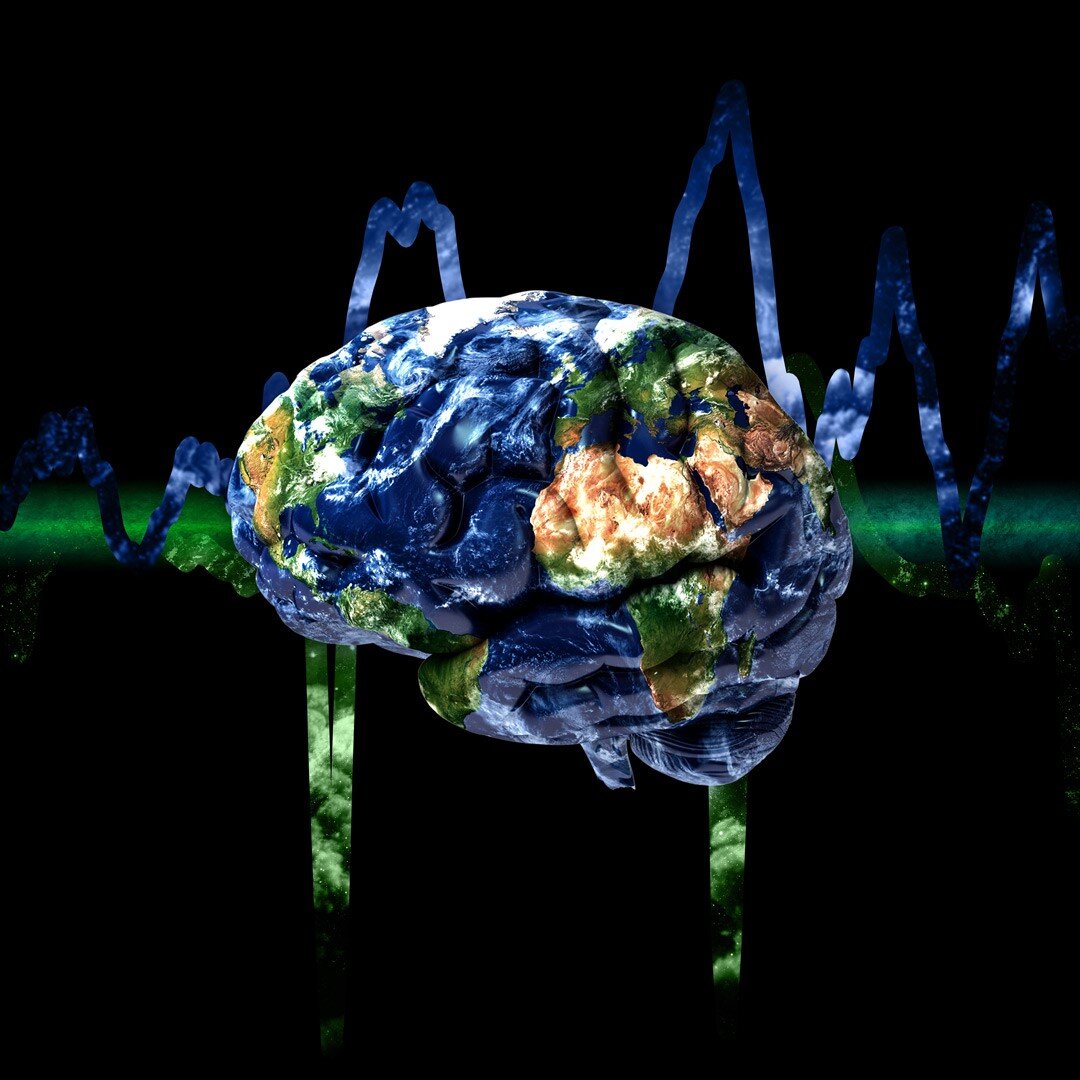Nature and Our Best Future: A Neuroscientist’s Perspective
Image by McCarron Graphics, courtesy of the author
The planet is in trouble, and therefore we are too. We need nature, and nature everywhere is dynamic and resilient, powerful and full of potential. We are part of nature, and our big brains are especially amazing: a nondescript-looking evolutionary marvel that holds our thoughts, feelings, plans, memories, dreams. Connecting our collective brain power to the proven power of nature is essential.
Right now our brains grapple with a complex web of social, cultural, financial, medical and environmental issues. The global crises in climate and biodiversity intersect with all of the above, and scientists from many disciplines are reawakening to a combination of ancient wisdom and mortal reality: nature is our lifeline. Fostering healthy and recovering ecosystems is urgent and mandatory to protect the climate, prevent species extinction, and protect our health. But can we heed unbiased science, and act with compassion and humility? Can our collective brains integrate common sense and life-saving knowledge - quickly - and leverage the healing power of nature despite powerful habits, hubris and conflicts of interest?
One positive sign and a good outcome of the global pandemic is that visits to public nature increased significantly, including among people who never visited before. People of all ages and abilities love and need natural spaces, and the United Nations Decade on Ecosystem Restoration (2021-2030) aims to prevent, halt and reverse ecological degradation, worldwide, for people and nature. Similar to aligning public health policy with evidence-based preventative medicine, (and “first do no harm”) a vital priority for the planet is preventing and halting ecological degradation. This is a clear conclusion of the first-ever IPBES/IPCC co-sponsored workshop on biodiversity and climate change: the climate crisis and extinction crisis are linked, and protecting and restoring nature is fundamental. These same recommendations are quantified and conceptualized in numerous peer-reviewed papers such as the Global Deal for Nature, Ten Golden Rules for Forest Restoration, and the seminal publication on Proforestation. Simple steps for the planet could also provide more people with regular access to real nature.
We need our collective brains to pay attention and lock into a positive feedback loop: we protect nature, nature protects us. Forests have even been called “Vitamin F.” We need wild nature in cities, villages and across the land to sustain and connect a sufficient network of land and water. Strategic planning for our best future is not optional and it’s urgent: only about 12% of the land in the United States has strong protection as a natural area (in many states it is just 1%). Scientists know this is not nearly enough, and many advocate for 50%, or “half-earth.”
Natural systems are working for all of us, for free, all of the time. Wild nature is essential for science and a refuge for all species. It is the support system for additional land that sustains local livelihoods and resource systems. The 2021 report titled “Conserving and Restoring America the Beautiful” outlines key principles, including the importance of local efforts, and aims for conservation of at least 30% of the land and water by 2030. But it needs to be clear: while many types of land are wonderful – farms, parks, etc. – a truly protected network is our lifeline to the future. Without a strategic plan and more specificity in our policies and language there is insufficient protection, fewer health benefits, little or no refuge from chronic fragmentation and degradation, and an increased risk of species extinction.
Many are beginning to recognize that protecting the natural world – where possible – reflects a historic convergence of common sense, financial responsibility, ancient wisdom, public opinion and scientific consensus. Perhaps most importantly, it’s our collective obligation and to our collective benefit: every species that exists today is a miracle of evolution, and a network of nature is important for our health, for the health of our communities, and for our future on a livable planet. Avoiding a “ghastly future” demands that scientists speak up and demands that public policies avoid entrenched thinking and conflicts of interest. It requires our collective brain health and healthy natural systems working together toward our best future.
Susan A. Masino, Ph.D. is a neuroscientist and the Vernon D. Roosa Professor of Applied Science at Trinity College in Hartford, CT. Her biomedical research focuses on brain health and metabolic therapy for epilepsy, autism and pain. Dr. Masino was recently a Charles Bullard Fellow in Forest Research at Harvard University, bringing together information on forests, brain health and a strategic network of nature. She coauthored the seminal paper on proforestation and was co-chair of the interdisciplinary Science and Technology Working Group of the Governor’s Council on Climate Change.
(c) 2021 Susan A. Masino
